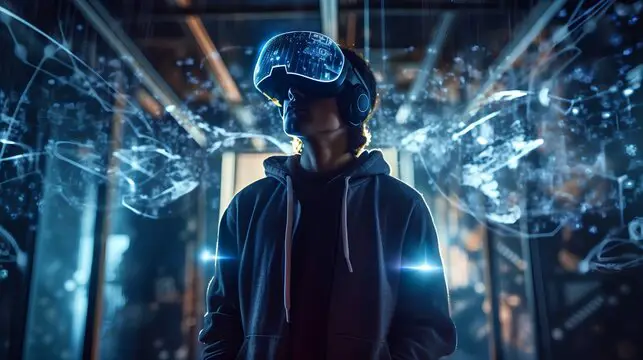Introduction:
Extended Reality (XR) stands at the forefront of technological innovation, offering immersive experiences that transcend the boundaries of the physical and digital worlds. This comprehensive exploration delves into the pros and cons of XR, encompassing Virtual Reality (VR), Augmented Reality (AR), and Mixed Reality (MR). As we journey through the various facets of XR, we aim to unravel the potential benefits and challenges that this groundbreaking technology brings to our lives.
I. Understanding Extended Reality:
Before delving into the pros and cons, it’s crucial to grasp the essence of XR. XR is an umbrella term that encompasses VR, AR, and MR, each offering a unique blend of real and virtual environments. VR immerses users in entirely simulated worlds, AR overlays digital information onto the real world, and MR integrates virtual elements into the user’s physical surroundings.
Learn about ARGO by Digilens.
II. The Pros of Extended Reality:
Immersive Experiences:
XR provides unparalleled immersive experiences, transporting users to virtual realms or enhancing their perception of the real world. This can be a game-changer for industries like gaming, education, and entertainment, offering a level of engagement previously unimaginable.
Revolutionizing Education:
XR has the potential to transform the education landscape by creating interactive and dynamic learning environments. Students can explore historical events, dissect virtual organisms, or conduct chemistry experiments without the constraints of the physical world.
Enhanced Training and Simulation:
In sectors such as healthcare, aviation, and military, XR facilitates realistic training simulations. Medical professionals can practice surgeries, pilots can simulate flights, and soldiers can undergo combat training in safe and controlled environments, reducing real-world risks.
Read about Moziware CIMO here.
Innovative Design and Collaboration:
XR technologies enable architects, designers, and engineers to visualize and collaborate on projects in three-dimensional spaces. This enhances creativity and efficiency in designing structures, products, and systems.
Entertainment and Gaming Revolution:
The gaming industry has witnessed a paradigm shift with the advent of XR. Virtual reality gaming offers an unprecedented level of immersion, allowing players to step into the worlds of their favourite games and interact with them on a whole new level.
Augmented Healthcare:
AR applications in healthcare empower surgeons with real-time information during surgeries, aid in medical diagnostics, and assist visually impaired individuals in navigating their surroundings.
III. The Cons of Extended Reality:
High Costs:
The initial investment in XR technology can be prohibitive. High-end VR headsets, AR glasses, and MR devices often come with a hefty price tag, limiting widespread adoption.
Technical Limitations:
XR experiences depend heavily on hardware capabilities. Technical limitations, such as limited field of view, screen resolution, and processing power, can impact the quality of immersion and realism.
Privacy Concerns:
The integration of XR into daily life raises significant privacy concerns. AR devices, equipped with cameras and sensors, have the potential to capture and store sensitive information, leading to issues related to data security and personal privacy.
Health and Safety Issues:
Prolonged use of XR devices may lead to health issues, including eye strain, motion sickness, and disorientation. Additionally, concerns arise regarding the potential long-term effects of extended exposure to virtual environments.
Social Isolation:
While XR connects individuals across distances, it may also contribute to social isolation. Excessive reliance on virtual interactions may diminish face-to-face communication and interpersonal relationships.
Ethical Implications:
XR introduces ethical challenges, such as the potential for misuse in surveillance, manipulation through augmented content, and the creation of virtual environments that could perpetuate harmful behaviour.
IV. Future Implications and Conclusion:
Extended Reality continues to evolve at a rapid pace, offering a glimpse into a future where the boundaries between the real and virtual worlds blur. As we navigate the intricate landscape of XR, it is imperative to weigh its remarkable benefits against the potential pitfalls. Striking a balance between innovation and ethical considerations will be pivotal in harnessing the full potential of XR while mitigating its drawbacks. As society embraces these transformative technologies, an ongoing dialogue on regulation, privacy safeguards, and ethical frameworks becomes essential to ensure a harmonious integration of XR into our daily lives.







